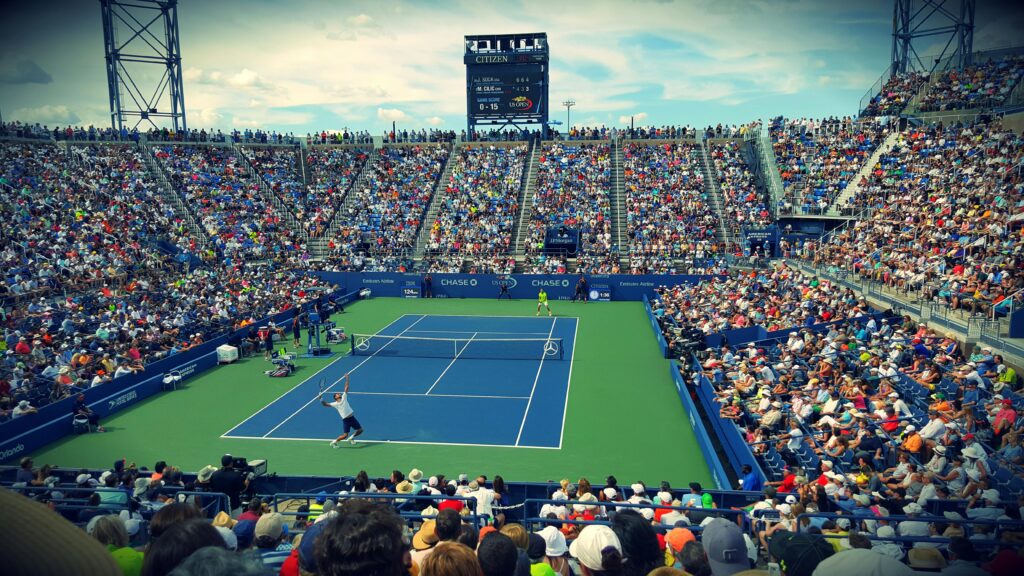
Introduction
Continuing our deep dive into the fascinating world of tennis, this third installment of our trivia series explores some lesser-known aspects and terms of the sport that add to its complexity and allure. From unique player statuses and scoring slang to strategic playing styles and monumental achievements, tennis is full of surprises.
1. What is the Lucky Loser in Tennis Tournaments?

The Lucky Loser: Turning Defeat into Opportunity
In tennis, a ‘Lucky Loser’ is a player who loses in the qualifying rounds of a tournament but gets a chance to compete in the main draw due to the withdrawal of another player. This unique system allows for unexpected twists in tournaments.
For instance, in the 2017 French Open, Marco Trungelliti, a lucky loser, reached the second round. Similarly, in the 2018 US Open, Lucky Loser Lesia Tsurenko reached the quarterfinals, showcasing how this rule can lead to remarkable underdog stories.
2. What Does ‘Bagel’ Mean in Tennis Scoring?

Serving a ‘Bagel’ on the Tennis Court
In tennis, the term ‘bagel’ refers to winning a set 6-0, symbolizing the zero’s shape, reminiscent of a bagel. This term is used to describe a dominant performance by a player.
Notable examples include Roger Federer‘s ‘double bagel’ victory in the 2006 Wimbledon against Richard Gasquet and Serena Williams‘ frequent ‘bagel’ sets, showcasing her dominance on the court.
3. What Does ‘Moonball’ Mean in Tennis?

The Art of the Moonball: A High-Flying Tennis Strategy
A ‘moonball’ in tennis is a high, arcing shot that goes deep into the opponent’s court. The term comes from the ball’s high trajectory, resembling a moon’s path. This tactic is used to push opponents back, disrupt their rhythm, or as a defensive move to regain position.
Famous practitioners include Rafael Nadal and Chris Evert, who have effectively used moonballs to outlast opponents or set up aggressive plays.
4. Grand Slam vs Career Slam: Definitions and Tennis Legends
The Pinnacle of Tennis Achievement: Grand Slam and Career Slam
A ‘Grand Slam’ refers to winning all four major tournaments (Australian Open, French Open, Wimbledon, and US Open) in a single calendar year. Only a few have achieved this feat, including Rod Laver and Steffi Graf.
A ‘Career Slam’ is winning each of the four majors at least once during a player’s career, a rare accomplishment achieved by legends like Andre Agassi, Serena Williams, and Rafael Nadal, showcasing their versatility and dominance across different surfaces.
5. The Nicknames of the Grand Slam Tournaments
The Grand Slams: More Than Just Names
Each Grand Slam tournament has a nickname reflecting its unique character. The Australian Open is known as the ‘Happy Slam’ due to its friendly atmosphere.
The French Open, played on the red clay of Roland Garros, is often called the ‘Clay Court Slam.’ Wimbledon, steeped in tradition and played on grass, is known as ‘The Championships,’ emphasizing its prestige.
The US Open, known for its vibrant atmosphere in New York, is often called the ‘Electric Slam.’
Conclusion
From the resilience of Lucky Losers to the tactical nuances of moonballing, and the glory of Grand Slams and Career Slams, tennis is a sport rich in diversity, strategy, and history.
Check out our Tennis Trivia and Fun Facts Part 1 and Part 2 and stay tuned for more insights into this enthralling world in our next articles!


